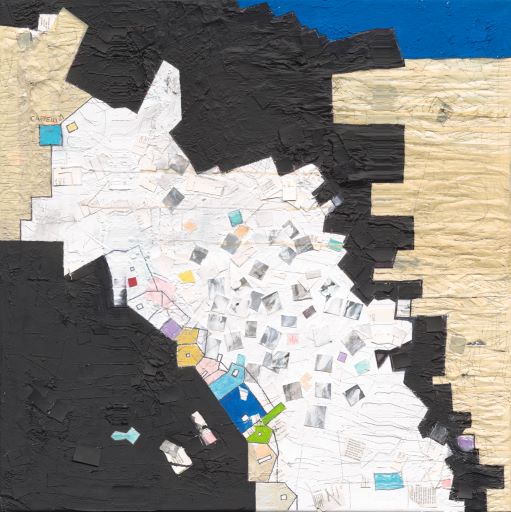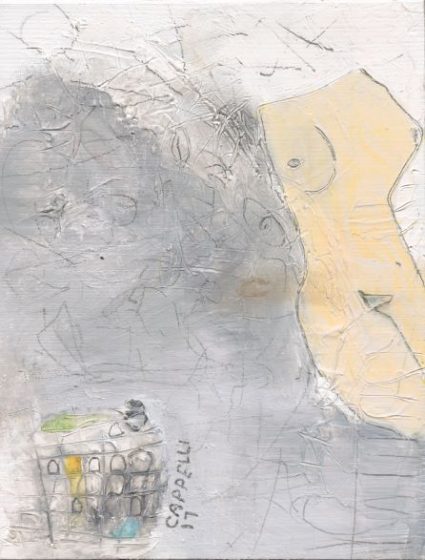Europe as a market is one that should always be of interest for any product (including NFT). One of interesting scale, with people earning enough money to have a thriving consumer-based economy. At least this has been the status quo for some time, which might have to be revised due to the war in Ukraine and what that has meant to the economies in the area. Inflation and high cost of living have arrived in Europe. An economic feature that is no longer a characteristic of the Global South. This is an important thing to consider, as the motivator that makes developing countries want to join Web3 is the ability to protect income against inflation and high cost of living. That could very come into play in the future.
Even so, Europe is continent that is highly industrialized and digitalized. London is one of the global tech hubs in the world, alongside Silicon Valley and Tel-Aviv. Paris, Amsterdam, Berlin and Dublin are all in there in terms of places where technological innovations occur. It’s not in vain that DevCon 1, the first ever Ethereum conference for developers, took place in London. London was the place where the first ever NFT, Etheria, was showcased. So, Europe has been an active part in the development of NFT and part of its history already.
First of all, we need to differentiate EU from Europe. After all, referring to London as European technological hub six years after Brexit might be confusing. The EU is currently comprised of 27 members, while Europe has 45 countries. Of these countries, 19 are in the eurozone, meaning that they use the euro currency.
The largest European economy is Germany. It is this country that provides the most NFT users in Europe, and ninth most in the world (1.25 million users as of 2022). Another European economic powerhouse, France, has seen the inception of many NFT startups. Like SoRare, a platform for football (soccer) trading cards in NFT format, or Arianee, which allows brands to certify the ownership of luxury assets and provide customer service and engagement. These are already big names in the NFT space, and tells the story of how the space has made room for itself in Europe.
However, Web3 in Europe still has a long way to go. Because even though Germany is providing the most amount of NFT users, that is through the sheer scale of its economy and population. The higher search densities for the term “NFT” are coming from countries like Cyprus, Luxembourg, Malta, and Iceland. Which do not have the extension or population size of say, Germany or Italy. France, for all its business-creation in the space, only had a 26% of search density in the month of August of this year, and is the first country (of the comparable nations) to appear in the list provided by Statista. Czechia is not that far from France in terms of online interest of NFTs, with 19% search volume in August. It is in this country where you can find SOPRG, an art gallery with presence in the Somnium Metaverse that is looking to bring artists into the NFT space. Since Europe has always been a hub for art, it is in this sector where NFTs can really explode and unleash their full potential (it already is doing so).
EU Legislation now focused on NFT
It’s always good to keep an eye on regulations in the European market. It’s sizable enough an economy to affect behavior worldwide if legislation is crafted. The General Data Protection Regulation (GDPR), a far-reaching regulation that restricted the use of cookies and the transparency with which they are enabled, is one example.
In the European Supreme Court, some fines and decisions have been taken against monopolistic behavior from platforms like Apple and Google. Meaning that the rule of law has taken action against the massive tech companies that inhabit the space.
Even though the NFT market seems to be all about the U.S. and Asia, it’s just a matter of time before the space takes the European market with similar force as other leading markets in the world. It is a highly industrialized and digitalized economy, with important sectors that are ripe for blockchain disruption. We are seeing how some of the leading European fashion brands are taking leaps into the metaverse. Football clubs are tokenizing the fan experience. And that’s not even mentioning the arts, one of the sectors that is pushing NFT adoption.
The first comprehensive blockchain-focused legislative package – Markets in Crypto Assets (MiCA) , covering for example KYC (Know Your Customer) and other aspects of AML (Anti-Money Laundering), should be in force by 2024, depending on the speed of implementation in national legislation.
With inflation becoming a problem in Europe, people could start looking at NFTs as ways to protect income. Whether it’s as an investment vehicle, as a means to collect art, or otherwise, Europe will surely become an important player in the NFT space. The general rule of thumb is that it’s early days, regardless of geography. Europe, as interesting a market as it is for NFTs, is no exception.



